IFUGAO
TRIBE:
PUBLISHED TRIBAL USED ANTIQUE
HAND MADE CEREMONIAL
HAT;
CIRCA 1870
|
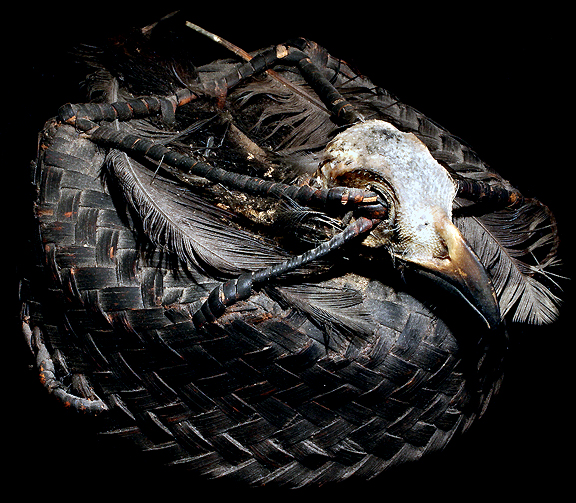
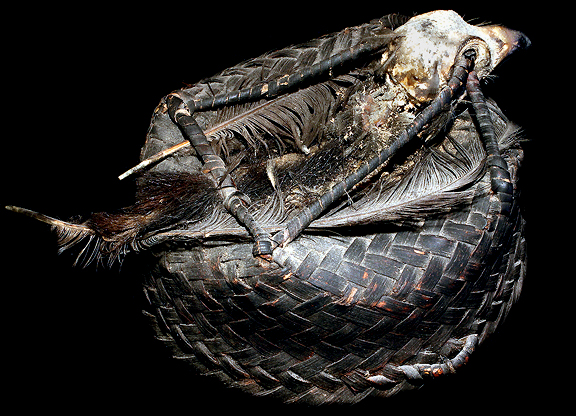
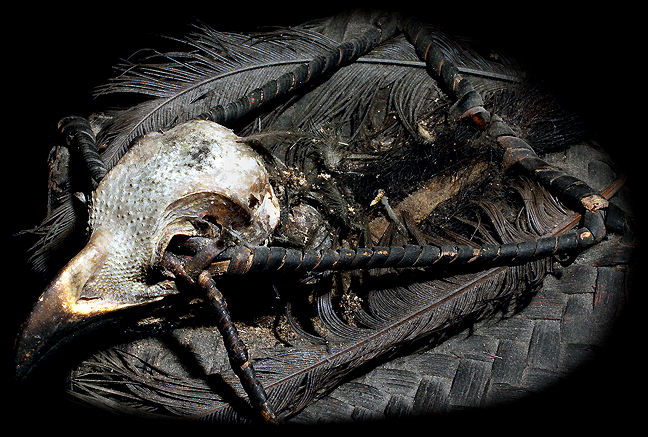
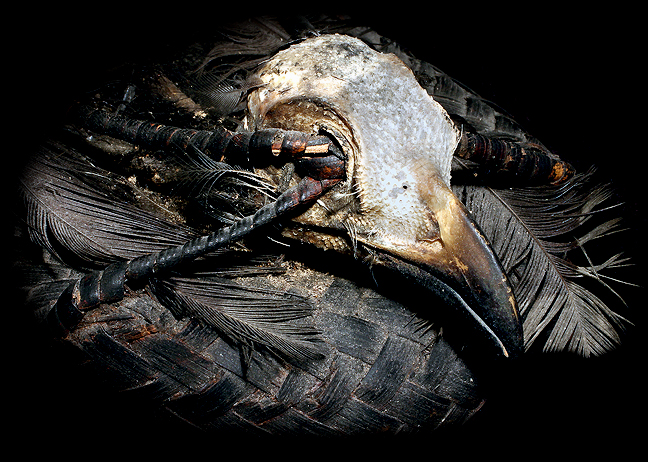
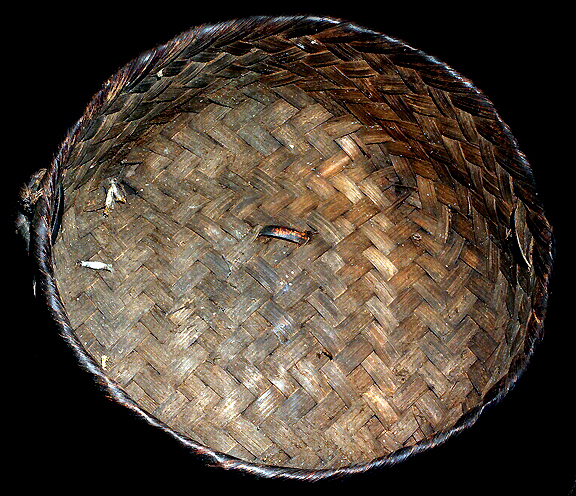
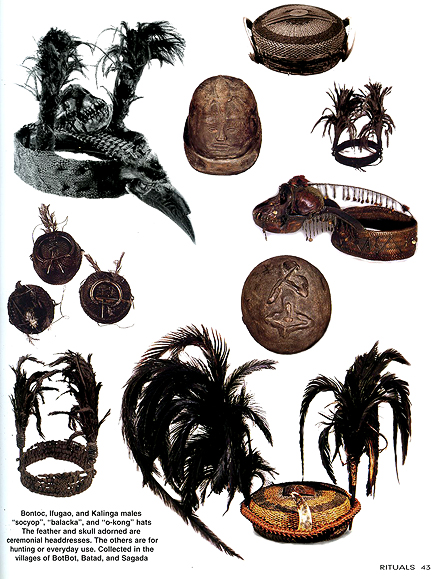
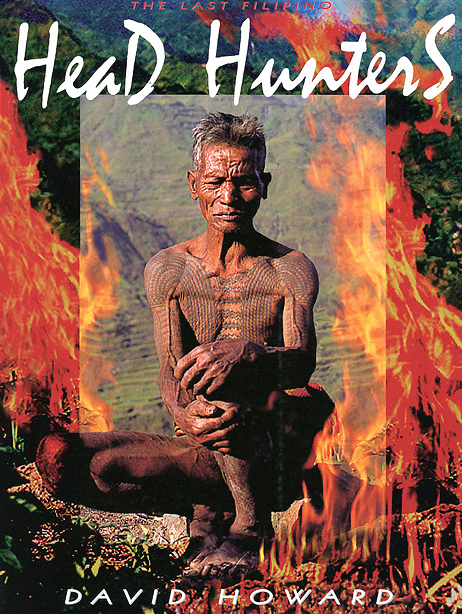
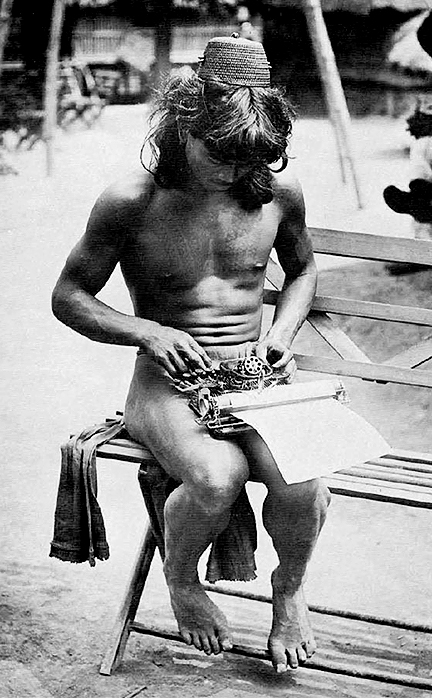

IFUGAO
TRIBE:
PUBLISHED TRIBAL USED ANTIQUE
HAND MADE CEREMONIAL
HAT;
CIRCA 1870
PUBLISHED IFUGAO TRIBAL USED ANTIQUE 19TH CENTURY
HAND MADE CEREMONIAL
HAT;
CIRCA 1870! THIS IS A VERY OLD ANTIQUE IFUGAO
TRIBAL USED PIECE THAT FEATURES A TROPHY BIRD’S SKULL, FEATHERS,
DECORATED IN ANIMAL’S TAILS, RATTAN WEAVING AND A HAND MADE FIBER
STRAP. FROM THE HEAD HUNTING TRIBE:
"IFUGAO" IN THE CORDILLERA MOUNTAINS ON THE ISLAND "LUZON" IN THE
PHILIPPINES. PUBLISHED
ON PAGE #43 IN THE BOOK ENTITLED: “THE LAST FILIPINO HEAD
HUNTERS.” (PLEASE SEE THE ABOVE
PICTURES OF THAT MENTIONED PAGE #43 AND THE BOOK’S COVER FOR YOUR
REFERENCE.) EXCELLENT
TRIBAL USED ANTIQUE AUTHENTIC ORIGINAL CONDITION! THIS IS A RARE AND
UNUSUAL PIECE
THAT HAS A FINE, RICH, ORIGINAL, ANCIENT PATINA ON HAND WOVEN RATTAN;
TRIBAL USED CEREMONIAL IFUGAO RITUAL “SOCYOP BALACKA O-KONG OKLOP” HAT. IT HAS A MUSEUM COLLECTION
CATALOGUE NUMBER ON IT THAT READS: “541A”
THIS UNUSUAL AND EXTREMELY RARE PIECE MEASURES 18 INCHES IN
CIRCUMFERENCE; 7 INCHES LONG X 5 INCHES WIDE X 4 INCHES DEEP. IN NEAR
PERFECT EXCELLENT ANTIQUE ORIGINAL TRIBAL USED CONDITION: NO DAMAGE, NO
REPAIRS, NO RESTORATION AND NO MISSING PARTS. THIS IS AN EXTRAORDINARY
PIECE OF ANCIENT IFUGAO TRIBAL ASIAN ART! IT SURELY IS THE VERY BEST,
OLDEST, AND FINEST IFUGAO RITUAL CEREMONIAL “SOCYOP BALACKA O-KONG
OKLOP”
HATS THAT I HAVE EVER OFFERED! IT HAS GREAT OLD PATINA
THAT SHOWS WEAR AND SIGNS OF TRIBAL USE.
Can
we tell a rich story about the people who actually made, and first
used, this 19th century ceremonial hat? This is an Ifugao ritual
object. Indeed, the Metropolitan Museum of Art, the National Gallery of
Australia, the Ethnology Museum of Barcelona, and many more
institutions around the world say much the same about hats like this in
their collections — generally cataloged under the name "Oklop," but
this example is unique, surely one of a kind rare; unusual fetishistic
example of an Ifugao ceremonial "Oklop" hat...
A fetish (derived from the French fétiche; which comes from the
Portuguese feitiço; and this in turn from Latin facticius,
"artificial" and facere, "to make") is an object believed to have
supernatural powers, or in particular, a human-made object that has
power over others. Essentially, fetishism is the emic attribution of
inherent value or powers to an object.
The term "fetish" has evolved from an idiom used to describe a type of
objects created in the interaction between European travelers and
Africans in the early modern period to an analytical term that played a
central role in the perception and study of non-Western art in general
and African art in particular.
William, who conducted an extensive ethno-historical study of the
fetish, argues that the term originated in the coast of West Africa
during the sixteenth and seventeenth centuries. Pietz distinguishes
between, on the one hand, actual African objects that may be called
fetishes in Europe, together with the indigenous theories of them, and
on the other hand, "fetish;" which is an idea of a kind of object, to
which the term applies.
A Bulul is a carved wooden figure
used to guard the rice crop by the Igorot peoples of northern Luzon.
The sculptures are highly stylized representations of ancestors, and
are thought to gain power from the presence of the ancestral spirit.
The Ifugao are particularly noted for their skill in carving bululs.
Bululs are used in ceremonies associated with rice production and with
healing. Creation of a bulul involves alwen bulul ritual by a priest to
ensure that the statue gains power. The bulul is treated with care and
respect to avoid the risk of the spirits of the ancestors bringing
sickness. The figures are placed in rice granaries to bring a plentiful
harvest. A large granary may need two bululs, and a wealthy noble may
also have one or more bululs in his house. Male and female Bulul
statues are often found together, with sex-related symbols such as the
mortar for the female and pestle for the male. A male bulul may
sometimes be decorated with a g-string, and a female with a waist
cloth, earrings and anklets. Although the form varies, the bulul is
commonly represented as seated on the ground, with arms crossed over
his upraised knees. The bulul has a simplified form, and is
traditionally carved from narra or ipil wood or sometimes stone. The
bulul is touched by hands dipped in blood of a chicken or pig in ritual
called tunod during the rice planting season. Over time the blood
imparts a dark color to the figures, overlaid with a patina of grease
from food offerings. Bululs are handed down to the first child of a
family. Typically the older statues have beetle holes made by insects
in the granary.
Headhunting is the practice of taking and preserving
a person's head
after killing the person. Headhunting was practiced in historic times
in parts of Oceania, South
Asia and Southeast
Asia, West and Central
Africa, and
Mesoamerica, as
well as Europe. It occurred in Europe to the end of the Middle Ages in
Ireland and the Anglo-Scottish
border
regions, and until the 19th century in Montenegro, Croatia, Albania and
western parts of Herzegovina.
The headhunting practice has been the subject of intense
study within the anthropological
community, where scholars try to assess
and interpret its social roles, functions, and motivations. Anthropological writings explore
themes in headhunting that include mortification of the rival, ritual
violence, cosmological balance, the display of manhood, cannibalism,
dominance over the body and soul of his enemies in life and afterlife,
as a trophy and proof of killing(achievement in hunting), show of
greatness, prestige by taking on a rival's spirit and power, and as a
means of securing the services of the victim as a slave in the
afterlife.
Today's scholars generally agree that
headhunting's primary function was ritual and ceremonial. It was part
of the process of structuring, reinforcing, and defending hierarchical relationships
between communities and individuals.
Some experts theorize that the practice stemmed from the
belief that the head contained "soul matter" or life force, which could be harnessed through
its capture.
Ifugao
culture revolves around rice, which is considered a prestige
crop. There is an elaborate and complex array of rice culture feasts
inextricably linked with taboos and intricate agricultural rites, from
rice cultivation to rice consumption. Harvest season calls for
grandiose thanksgiving feasts, while the concluding harvest rites
"tungo" or "tungul" (the day of rest) entail a strict taboo of any
agricultural work. Partaking of the rice wine (bayah), rice cakes, and
'moma' (mixture of several herbs, powdered snail shell and betel nut/
arecoline: and acts as a chewing gum to the Ifugaos) is an indelible
practice during the festivities and ritual activitiess. their retual
and Agricultural terracing is their principal means of livelihood along
with farming. Their social status is measured by the number of rice
field granaries, family heirlooms, gold earrings, carabaos (water
buffaloes), as well as, prestige conferred through time and tradition.
The more affluent, known as kadangyan were usually generous by nature,
giving rice to poor neighbors in time of food shortage(s) and/or
hardship(s). Furthermore, their culture was known for their legal
system, using one of the world's most extensive oral legal traditions
specifying the offense depending on the use of custom law; trial by
elders (influenced in part by public opinion); or trial by ordeal. The
wealthy were subjected to greater fines than the poor.
The
Ifugao art of woodcarving is
universally known. Most notably are the carved granary guardians
“bulul,” and the prestige bench; the “hagab,” but in addition to those
free standing wood carvings: The Ifugao also incorporate beautiful
architectural wood cavings into their hut’s house posts, exterior
doors, kitchen shelving and a multitude of imaginative additions to
nearly every element in, and on, their Ifugao huts!
Ifugao huts are well-constructed and
characterized by wooden floors, windowless walls, and pyramidal thatch
roofs. Elevated from the ground by four sturdy tree trunks, they
feature removable staircases that are hoisted up at night to prevent
entry by enemies or wild animals.
There are many varieties of Ifugao
huts. They have heavy thatch roofs to serve as protection from rain and
cold weather. The Ifugao inhabit the rugged terrain of the Cordillera
Mountain Range in the Mountain Province of Central Northern Luzon
Island. They have developed and maintained a distinct culture which
resisted outside influence. Modern times ended their isolation; The
only world they previously knew was an environment of towering
mountains, rolling hills, windy plateaus, warm valleys, shallow but
swift rivers, dense forests, rice paddies, and their immense
rice
terraces
known as “The 7th Wonder of the World!”
"PUNAM-HAN"
are
used in sacrificial offertory rituals by Ifugao Mombaki Shamans; the
blood of butchered animals are poured over
the outside while rice in combination with wrapped textile bundles,
small wooden carvings; "Hipag" figures, wrapped bamboo, animal
sacrificial implements and any assortment of appropriate tribal
sacrificial elements are placed inside as offering to the Ifugao
gods. The Punamhan is regarded as a sacred tribal ritual object by the
Ifugao tribe.
Untouched
by the influences of Spanish colonialism, Ifugao culture
value kinship, family ties, religious and cultural beliefs. They're
unique among all ethnic groups in the mountain province, not only for
their interesting customs and traditions but also for their narrative
literature such as the hudhud, an epic dealing with hero ancestors sung
in a poetic manner. Another feature unique to the Ifugao is their
woodcarving art, most notably the carved granary guardians bului and
the prestige bench of the upper class, the hagabi. Their textiles
renowned for their sheer beauty, colorful blankets and clothing woven
on looms. Houses were well-built, characterized by as a square with
wooden floors, windowless walls, and pyramidal thatch roofs. Elevated
from the ground by four sturdy tree trunks, they feature removable
staircases that were hoisted up at night to prevent entry by enemies
and/or wild animals. Lastly, their attire remain traditional for male
Ifugaos, donning the wanno or g-string; there are six types of wanno
which are used depending on the occasion or the man's social status.
Ifugao women, on the contrary, wear tapis, a wraparound skirt; there
are five kinds of skirts worn, depending on the occasion.
THE IFUGAO
TRIBE, ON THE ISLAND: LUZON
IN THE PHILIPPINES, USE
"PUNAMHAN"
HAND CARVED WOODEN BOXES
THAT ARE
"ACTIVATED" THROUGH RITUAL
ANIMAL
BLOOD SACRIFICE.
THE IFUGAO; ORIGINALLY REFERRED TO AS "IGOROTS" WERE
ONCE THOUGHT TO BE INCLUDED WITH THE BONTOC, KALINGA
KANKANAY, IBALOI AND GADDANG AS A SINGLE TRIBE!
IT WAS NOT UNTIL EXHAUSTIVE RESEARCH LATER REVEALED
THESE WERE INDIVIDUAL TRIBES WITH DISTINCT
CULTURAL DIFFERENCES AND BELIEF SYSTEMS!
|
Asian tribal art, artifacts, ifugao, kalinga, bontoc,
asmat, dayak, philippines, asia, head hunters, human trophy skull,
skulls, african, antiques, naga, necklace, headdress, head hunting
trophy skull, Indonesia, Indonesian, SOUTHEAST ASIA, Borneo, Sarawak,
ANTIQUES, Kalimantan, Sulawesi, ART, Sumatra, Timor, ARTIFACTS, Bali,
Java, INDIA, Flores, Sumba, NEPAL, Savu, Roti, BABAS, Lombok, Malaysia.
HOLY MEN, Nusa Tengara, New Guinea, SHAMAN, Irian Jaya, Moluccas,
CONTEMPORARY ART, Tanimbar, Leti, OLD, Lembata, Alor, MINILA,
Philippines, Luzon, PALAWAN, Mindanao, Sulu, BLOW GUN, Southeast Asia,
Asia, NOSE RING, Asian, Burma,
HAT, Myanmar, India, SWORD, Nagaland, Nepal, KNIFE, Tibet, Himalaya,
MOUNTAIN, Himalayan, Assam, TRIBES, Thailand, Vietnam, YAO, Yunnan,
Hainan, HMONG, China, Central Asia, ZAO, Dayak, Batak, BAG, Toraja,
Naga, POLE, Chin, Li, QUIVER, Miao, Bahau, MASK, Punan, Penan, MODELED
SKULL,
Modang, Kayan, BRASS COIL, Kenyah, Ngaju, COILS, Kontu, Kantu, TEXTILE,
Iban, Maloh, PRIEST, Tunjung, Busang, RITUAL, Aoheng, Dong Son,
MYSTICAL
Konyak, Tangkhul, MYSTIC, Ao, Angami, PRIMITIVE, Sema, Wancho,
HAND MADE, Bontoc, B'laan, ARTIST, Bagabo, Gaddang, BULUL, Ifugao.
Sculpture, BULULS, statue, mask, BOX, beadwork, bead, AUTHENTIC,
textile,
weaving, TRIBAL, costume, hat, WOODEN, shield, spear, WOOD, helmet,
sword, BOAR, charm, fetish, FEATHERS, drum, basket, FEATHER, basketry,
jewelry, SILVER, ornament, weapon, ASMAT Canoe, amulet, decoration,
SCULPTURAL,
architecture, architectural, SCULPTURE, longhouse, headhunter, SKULL,
headhunting, shaman, TRIBAL, festival, ceremony, ceremonial, SHAMAN
ritual, tattoo, HEAD HUNTER Skull, dragon, hornbill, HEADDRES, art,
tribal,
VIETNAM, tribe, culture, TRIBES, cultural, myth, TRIBAL, artifact,
artefact, REAL, wood, stone, HAND WOVEN, cotton, metal, CAST bronze,
brass,
cloth, ISLAND, tropics, tropical, EQUATOR, ethnographic, EQUATORIAL,
Tribal Art, Primitive Art, Ethnographic Art, Oceanic Art, Folk Art,
Ethnic Cultures, AUTHENTIC Artifacts, Textiles, ANCIENT, Costumes,
Sculpture, SCULPTURES, Masks, Beadwork, BEADS, Fetishes, Charms, GOLD
Jewelry, Baskets, BAMBOO, Weapons, Shields, ORNATE, Indonesia, Borneo,
PUPPETS,
Sumatra, Sulawese, SHADOW PUPPET, Java, Bali, CAVE, Timor, Flores,
ISLAND, Sumba. Lombok, VILLAGE, Molucca, Philippines, RICE TERRACE,
Luzon,
Mindanao, DAVID HOWARD PHOTOGRAPHY, Nepal, Burma, SACRED JOURNEY:
THE GANGES TO THE HIMALAYAS, Thailand, THE LAST FILIPINO HEAD HUNTERS,
Laos,
Vietnam, TEN SOUTHEAST ASIAN TRIBES FROM FIVE COUNTRIES, India, Central
Asia,
NECKLACES, Southeast Asia, Dayak, STATUE, lban, Kayan, INK STAMP,
Kenyah, Modang, FEATHERED, Bahau, Ngaju, HORSE, Batak, Toraja,
NAGALAND,
Naga, Dong Song. TRIBAL ART, AUTHENTIC PRIMITIVE ART, OLD ETHNOGRAPHIC
ART, RARE OCEANIC ART, BEAUTIFUL FOLK ART, ETHNIC CULTURES,
TRIBAL
ARTIFACTS, TEXTILES, ASIAN, COSTUMES, SCULPTURE, WOOD MASKS, BEADWORK,
CHARMS,
FETISHES, SIVER JEWELRY BOXES, BASKETS, WEAPONS, FILIPINO SHIELDS,
INDONESIA, BORNEO, ETHNOGRAPHIC, SUMATRA, SULAWESE, TRIBAL, JAVA,
BALI, TRIBES, TIMOR, FLORES, ASIAN, SUMBA. LOMBOK, TRIBES, MOLUCCA,
PHILIPPINES, TRIBAL, LUZON, ASIAN, MINDANAO, NEPAL, ASIA, BURMA,
THAILAND, TRIBAL,
LAOS, VIETNAM, TRIBES, INDIA, CENTRAL TRIBAL ASIA, ARTIFACTS, SOUTHEAST
ASIA, HEAD HUNTER, DAYAK, ASIAN, IBAN, KAYAN, TRIBE, KENYAH, MODANG,
TRIBAL,
BAHAU, NGAJU, ASIAN, BATAK, TORAJA, TRIBE, NAGA, tribal art, ASIAN,
primitive art, ASIA, ethnographic art, TRIBAL, oceanic art, ASIAN
folk art, SOUTHEAST ASIA ethnic cultures, artifacts, ASIAN, textiles,
costumes,
VILLAGE sculpture, masks, TRIBAL beadwork, fetishes, TRIBES charms.
jewelry, TRIBE, baskets, weapons, TRIBAL, shields, indonesia, ASIAN,
borneo. sumatra, TRIBAL ART sulawese, java, HILL TRIBE, bali, timor,
ASIAN,
flores, sumba, TRIBES, lombok, molucca, BULUL STATUES philippines,
luzon, ISLAND ART, mindanao, nepal, ASIA, burma, thailand, JOURNEY
laos, vietnam, TRIBAL, india, central asia, TRIBE, southeast asia, OLD
ART, dayak. lban, TRIBES, kayan, kenyah, ASIAN, modang, bahau,
AUTHENTIC
TRIBAL ART, ngaju, batak, HEADDRESS, toraja, naga, MOUNTAIN PROVINCE,
dong
song, KALINGA, Indonesia, Indonesian, IFUGAO, Borneo, Sarawak,
BONTOC, Kalimantan, Sulawesi, TRIBAL, Sumatra, Timor, ASIAN, Bali,
Java, OLD TRIBAL ART
Flores, Sumba, Savu,
Roti, Lombok, Malaysia. Nusa Tengara, New Guinea, Irian Jaya, Moluccas,
Tanimbar, Leti, Lembata, Alor, Philippines,
Luzon, Mindanao, Sulu, Southeast Asia, Asia, Asian, Burma. Myanmar,
India, Nagaland, Nepal, Tibet, Himalaya, Himalayan, Assam, Thailand,
Vietnam, Yunnan, Hainan, China, Central Asia, Dayak, Batak, Toraja,
Naga, Chin, Li, Miao, Bahau, Punan, Penan, Modang, Kayan. Kenyah,
Ngaju, Kontu, Kantu, Iban, Maloh, Tunjung, Busang, Aoheng, Dong Son,
Konyak, Tangkhul, Ao, Angami, Sema, Wancho, Bontoc, B'laan, Bagabo,
Gaddang, Ifugao. Sculpture, statue, mask, beadwork, bead, textile,
weaving, costume, hat, shield, spear, helmet, sword, charm, fetish,
drum, basket, basketry, jewelry, ornament, weapon. Canoe, amulet,
decoration, architecture, architectural, longhouse, headhunter,
headhunting,
shaman, festival, ceremony, ceremonial, ritual, tattoo. Skull, dragon,
hornbill, art, tribal, tribe, culture, cultural, myth, artifact,
artefact, wood, stone, cotton, metal, bronze, brass, cloth, tropics,
tropical, ethnographic,
primitive, art, masks, asian, ethnographic, oceanic, folk, ethnic
cultures,
artifacts, Bahau, Kalimantan, indonesia, borneo, sumatra. sulawese,
java, bali, timor. flores, sumba, lombok, molucca, philippines, luzon,
mindanao, nepal, burma, thailand, laos, vietnam, india, central asia,
southeast. dayak, lban, kayan, kenyah, modang, bahau, ngaju, batak.
toraja, naga, dong song. Myanmar, Burma, Kachin, Naga, Konyak, Chin,
Ao, Wancho, Thangkul, Dao, Helmet, Hat, Hornbill, Mizo, Sema, Assam,
India, Mithan, Maram, Morung, Myth, Dream, Post, Pillar, Panel,
Architecture,
Architectural, Tusk, Hill Tribe, Sacrifice, Skull, War Path, Ritual.
Spirit, Figure, Motif, Design, Ceremony, Ceremonial, Raid, Fur, Claws,
Teeth, Fangs, Carving, Statue, Sculpture, Kalinga, Ifugao, Luzon,
Mindanao, T'boli, Bagabo, B'laan, Sulu, Philippines, Weaving, Blouse,
Skirt, Sarong, Shawl, Necklace, Bracelet, Conch Shell, Shell, Brass,
Spear.
Feather, House, Tradition, Traditional, Ancestor, Cloth, Ikat, Chapan,
Uzbek, Asia, Turkoman, Turkamen, Dragon, Snake, Bird, Gong, Island,
Indonesia, Indonesian, Borneo, Sarawak, Kalimantan, Sulawesi, Sumatra,
Timor, Bali, Java, Flores, Sumba, Savu, Roti, Lombok, Malaysia. Nusa
Tengara, New Guinea, Irian Jaya, Moluccas, Tanimbar, Leti, Lembata,
Alor, Philippines, Luzon, Mindanao, Sulu, Southeast Asia, Asia, Asian,
Burma. Myanmar, India, Nagaland, Nepal, Tibet, Himalaya, Himalayan,
Assam, Thailand, Vietnam, Yunnan, Hainan, China, Central Asia, Dayak,
Batak, Toraja, Naga, Chin, Li, Miao, Bahau, Punan, Penan, Modang,
Kayan.
Kenyah, Ngaju, Kontu, Kantu, Iban, Maloh, Tunjung, Busang, Aoheng,
Dong Son, Konyak, Tangkhul, Ao, Angami, Sema, Wancho, Bontoc, B'laan,
Bagabo, Gaddang, Ifugao. Sculpture, statue, mask, beadwork, bead,
textile, weaving, costume, hat, shield, spear, helmet, sword, charm,
fetish, drum, basket, basketry, jewelry, ornament, weapon. Canoe,
amulet, decoration, architecture, architectural, longhouse, headhunter,
headhunting, shaman, festival, ceremony, ceremonial, ritual, tattoo.
Skull, dragon, hornbill, art, tribal, tribe, culture, cultural, myth,
artifact, artefact, wood,
stone, Indonesia, Indonesian, Borneo, Sarawak, Kalimantan, Sulawesi,
Sumatra, Timor, Bali, Java, Flores, Sumba, Savu, Roti, Lombok,
Malaysia. Nusa Tengara, New Guinea, Irian Jaya, Moluccas, Tanimbar,
Leti, Lembata, Alor, Philippines, Luzon, Mindanao, Sulu, Southeast
Asia, Asia, Asian, Burma. Myanmar, India, Nagaland, Nepal, Tibet,
Himalaya, Himalayan, Assam, Thailand, Vietnam, Yunnan, Hainan, China,
Central Asia, Dayak, Batak, Toraja, Naga, Chin, Li, Miao, Bahau, Punan,
Penan, Modang, Kayan. Kenyah, Ngaju, Kontu, Kantu, Iban, Maloh,
Tunjung, Busang, Aoheng, Dong Son, Konyak, Tangkhul, Ao, Angami, Sema,
Wancho, Bontoc, B'laan, Bagabo, Gaddang, Ifugao. Sculpture, statue,
mask, beadwork, bead, textile, weaving, costume, hat, shield, spear,
helmet, sword, charm, fetish, drum, basket, basketry, jewelry,
ornament, weapon. Canoe, amulet, decoration, architecture,
architectural, longhouse, headhunter, headhunting, shaman, festival,
ceremony, ceremonial, ritual, tattoo. Skull, dragon, hornbill, art,
tribal,
tribe, culture, cultural, myth, artifact, artefact, wood, stone,
cotton,
metal, bronze, brass, cloth, tropics, tropical, ethnographic.
Japan, Japanese, shrine,
Masks, tsuba, kabuto, mempo, Dayak, Indonesian, sculpture, Indian Cola,
Tibetan
Thanka, Batak. Timor, Nias, African, Oceanic, Philippines, Luzon,
Ifagao,
Batak, Dyak, Nias, Bul'ul, artifacts, authentic, antique, asian, asia,
expert, dealer, sell, buy, Los Angeles, California, JAPAN, JAPANESE.
SHRINE,
MASKS, TSUBA, KABUTO, MEMPO, DAYAK. INDONESIAN, SCULPTURE, INDIAN COLA,
TIBETAN THANKA, BATAK, TIMOR, NIAS, AFRICAN, OCEANIC. PHILIPPINES,
LUZON,
IFAGAO, BATAK, DYAK, NIAS, BUL'UL, ARTIFACTS, AUTHENTIC, ANTIQUE,
ASIAN,
ASIA, EXPERT, DEALER, SELL, BUY, Japan, Japanese, Shrine, Masks, Tsuba,
Kabuto, Mempo, Dayak, Indonesian, Sculpture. Indian Cola, Tibetan
Thanka,
Batak, Timor, Nias, African, Oceanic, Philippines, Luzon, Ifagao,
Batak,
Dyak, Nias, Bul'ul, Artifacts, Authentic, Antique, Asian, Asia, Expert,
Dealer, Sell, Buy, japan, japanese, shrine, masks, tsuba, kabuto,
mempo,
dayak, indonesian, sculpture, indian cola, tibetan thanka, batak,
timor, nias, african, oceanic, philippines, luzon, ifagao, batak, dyak,
nias,
bul'ul, artifacts, authentic, antique, asian, asia
Japan, Japanese, shrine,
Masks, tsuba, kabuto, mempo, Dayak, Indonesian, sculpture, Indian Cola,
Tibetan
Thanka, Batak. Timor, Nias, African, Oceanic, Philippines, Luzon,
Ifagao,
Batak, Dyak, Nias, Bul'ul, artifacts, authentic, antique, asian, asia,
expert, dealer, sell, buy, Los Angeles, California, JAPAN, JAPANESE.
SHRINE,
MASKS, TSUBA, KABUTO, MEMPO, DAYAK. INDONESIAN, SCULPTURE, INDIAN COLA,
TIBETAN THANKA, BATAK, TIMOR, NIAS, AFRICAN, OCEANIC. PHILIPPINES,
LUZON,
IFAGAO, BATAK, DYAK, NIAS, BUL'UL, ARTIFACTS, AUTHENTIC, ANTIQUE,
ASIAN,
ASIA, EXPERT, DEALER, SELL, BUY, Japan, Japanese, Shrine, Masks, Tsuba,
Kabuto, Mempo, Dayak, Indonesian, Sculpture. Indian Cola, Tibetan
Thanka,
Batak, Timor, Nias, African, Oceanic, Philippines, Luzon, Ifagao,
Batak,
Dyak, Nias, Bul'ul, Artifacts, Authentic, Antique, Asian, Asia, Expert,
Dealer, Sell, Buy, japan, japanese, shrine, masks, tsuba, kabuto,
mempo,
dayak, indonesian, sculpture, indian cola, tibetan thanka, batak,
timor, nias, african, oceanic, philippines, luzon, ifagao, batak, dyak,
nias,
bul'ul, artifacts, authentic, antique, asian, asia
David Howard, art, artist, photography, photographic,
photographs,
print, prints, director, producer, exhibitions, exhibits, exhibit,
painting, paint, studio, studios, etching, silkscreens, silkscreen,
contemporary art, Pop Art, artist's story, journal, video, videos,
documentary, documentaries, books, book, asian, asia, Filipino,
Philippines, Sacred Journey, author, The Last Filipino Head Hunters,
collections, collectables, collectable, archives, archive, art, fine,
contemporary, video, dvd, documentary, Keith Haring, Nam June Paik,
Christo, Lowell Nesbitt, Lawrence Ferlinghetti, Charles Arnoldi,
artists, studio visit, artist, program, sculpture, painting,
photography, prints, print,
photo, paintings, sculptures, keith haring, christo, david howard, nam
june
paik, artseen, videos tape, programs, documentaries, arts, world, san
francisco,
new york, los angeles
ANDY WARHOL,
JOSEPH ALBERS, ELLSWORTH KELLY, CLAES
OLDENBURG,
ROBERT MOTHERWELL, FRANK STELLA, JAMES ROSENQUIST, ROBERT RAUSCHENBURG,
KEITH
HARING, CHRISTO, ROBERT INDIANA, ROY LICHTENSTEIN, ROBERT MAPPLETHORPE,
ALICE
NEAL, ARTISTS, ART, ARTIST, PAINTING, SCULPTURE, PHOTOGRAPHY, SITE
SPECIFIC,
NAM JUNE PAIK, KENNY SCHARF, LOWELL NESBITT, LAWRENCE FERLINGHETTI,
ARMAN
ARMAN, CHARLES ARNOLDI, CHRIS BURDEN, ART STUDIOS, VIRTUAL REALITY,
ABSTRACT
EXPRESSIONISM, PRINT MAKING, ETCHING, PAINTING, HOLOGRAPHY, AFRICAN
ART,
WOODCARVING, MURAL. MURALS, COMPUTER ART, FIGURATIVE EXPRESSIONISM,
IMPRESSIONISM,
MULTI-MEDIA, MULTI MEDIA
tribal art, tribal arts, antique tribal
art, fine art, antique traditional art, traditional art, asian tribal
art,
american tribal art, african tribal art, tribal mask


